The Rise of Adaptive Surfing and Inclusive Competitions
23 November 2024
Surfing has always been about the connection between humans and the ocean, the thrill of catching that perfect wave, and the challenge of balancing on a board as it glides across the water. But what happens when that challenge is even greater—when the obstacles aren't just the waves themselves, but physical or cognitive disabilities? Enter adaptive surfing, a growing movement that’s redefining the sport and opening doors for surfers of all abilities. In this article, we'll dive deep into the rise of adaptive surfing and the increasing number of inclusive competitions, both of which are paving the way for a more diverse and inclusive surfing community.
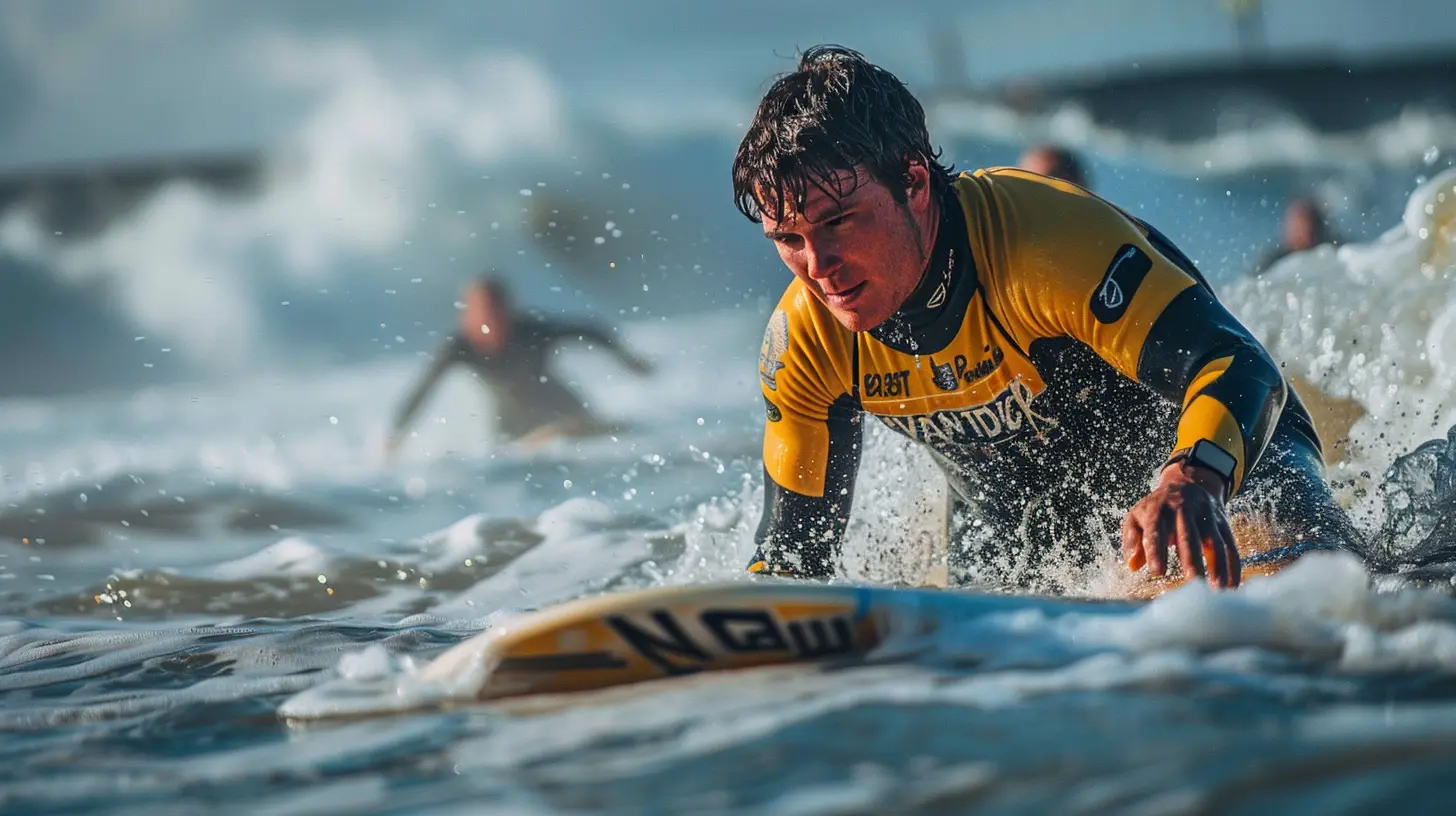
What is Adaptive Surfing?
Adaptive surfing is exactly what it sounds like—surfing that’s been adapted to meet the needs of individuals with disabilities. Whether it’s a physical disability like spinal cord injuries, limb differences, or visual impairments, or cognitive challenges such as autism, adaptive surfing is all about making the sport accessible for everyone.But it's more than just a modified board or a helping hand in the water. Adaptive surfing embodies the spirit of resilience, determination, and, above all, inclusivity. It’s proof that surfing isn't just for the stereotypical "surfer dude" – it's for anyone who has a passion for the ocean and a desire to ride the waves.
How Do Adaptive Surfing Modifications Work?
Adaptive surfing modifications vary depending on the surfer’s needs. For instance:- Prone Surfing: This is for surfers who may not be able to stand due to paralysis or other limitations. Instead, they ride the wave while lying down on the board. It's a different technique but equally thrilling.
- Seated Surfing: Some adaptive surfers use a seated board, where they sit in a custom-made chair fixed onto the board. This is especially common for those with lower-body disabilities.
- Tandem Surfing: In this case, a surfer with more experience or ability rides the wave alongside the adaptive surfer, offering support and guidance.
- Assistive Technology: From custom-made boards to specialized wetsuits, assistive technology plays a huge role in adaptive surfing. Some boards have grips, straps, or other adjustments to ensure stability and control.
If you think about it, adaptive surfing is like playing a video game with modified controls—it’s still the same game, but tailored to ensure everyone can play.
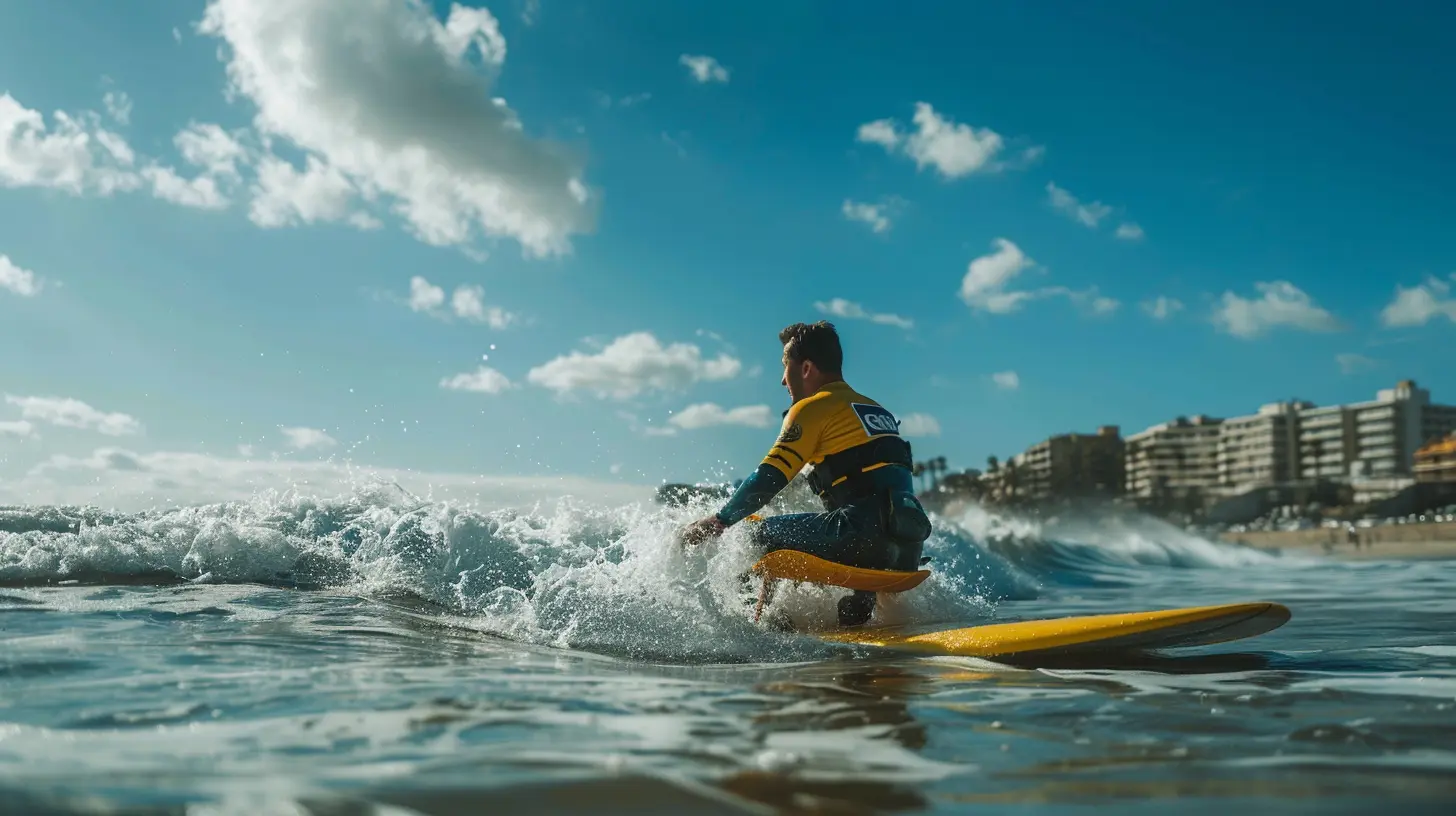
The Growth of Adaptive Surfing Events
While adaptive surfing has been around for several decades, it’s only in recent years that it’s truly gained traction on the global stage. A big part of this rise is the growing number of inclusive competitions, which allow adaptive surfers to showcase their skills, compete against others, and most importantly, be recognized as athletes in their own right.The ISA World Para Surfing Championship: Surfing’s Paralympics
One of the biggest milestones in the adaptive surfing world is the annual ISA World Para Surfing Championship. Organized by the International Surfing Association (ISA), this event is often referred to as the "Paralympics of Surfing." It brings together adaptive surfers from all corners of the globe to compete in various categories based on their abilities.What’s truly remarkable about this event is the sense of community it fosters. It’s not just about winning—it’s about sharing stories, overcoming personal challenges, and celebrating the unique bond between surfers and the ocean. Plus, the exposure from these competitions is helping to raise awareness about adaptive surfing, inspiring more people with disabilities to give the sport a try.
National and Local Adaptive Surfing Competitions
Beyond the ISA championship, adaptive surfing competitions are popping up all over the world. In the U.S., organizations like AmpSurf and Life Rolls On host regular adaptive surfing events that cater to surfers of all skill levels. In Australia, adaptive surfing is recognized and supported at both the local and national levels, with competitions like the Australian Adaptive Surfing Titles gaining attention.These events are more than just competitions—they provide a space for adaptive surfers to connect, learn from each other, and push the boundaries of what’s possible on the waves. And let's not forget, they’re also a ton of fun!
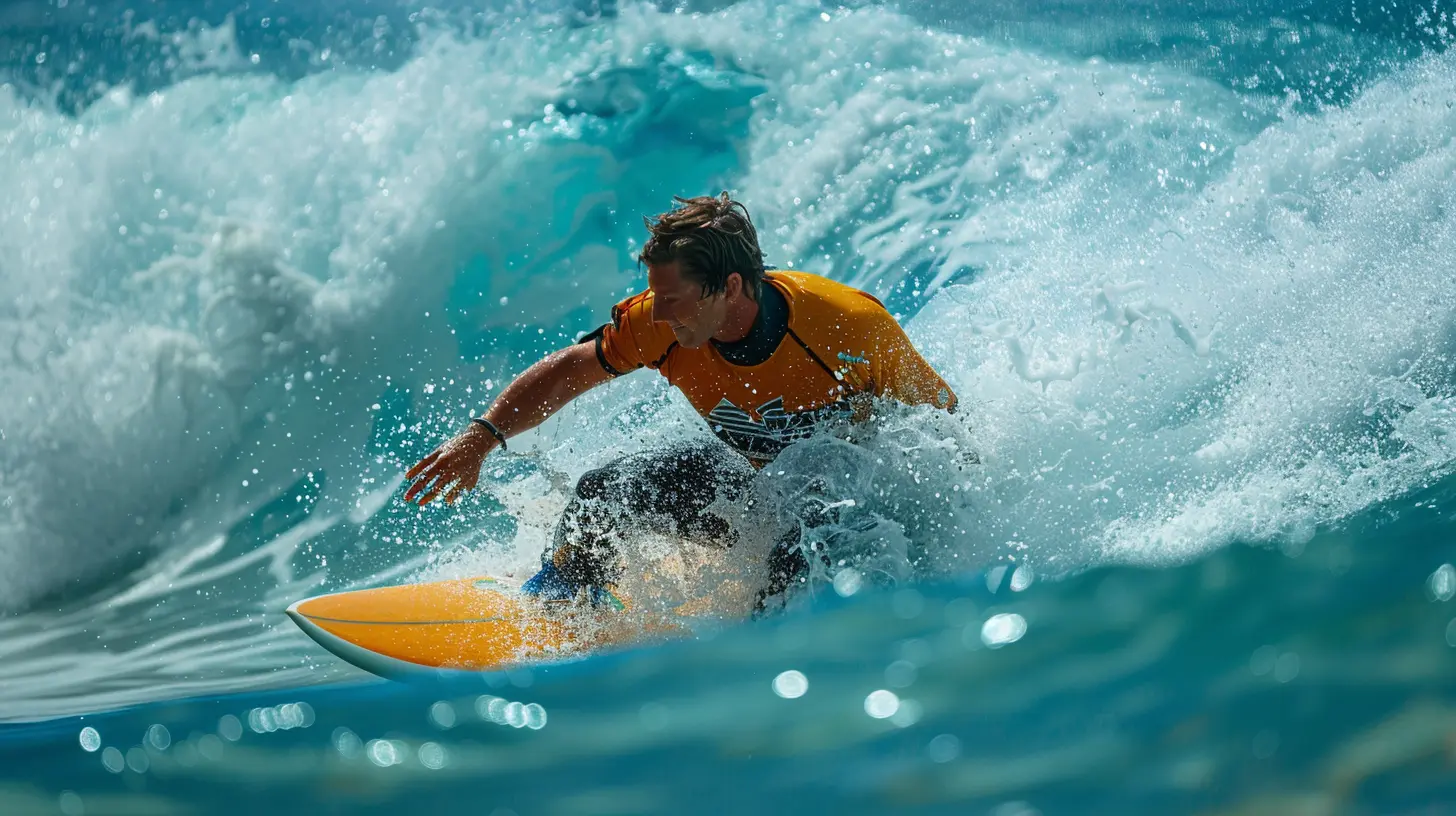
The Impact of Inclusive Competitions
So, why are inclusive surfing competitions so important? Well, for starters, they help break down the barriers that have historically kept people with disabilities out of the surf scene. Surfing, like many sports, has been dominated by able-bodied athletes for years. But adaptive surfing competitions are changing the narrative, showing that surfing is for everyone—regardless of ability.Representation Matters
Imagine growing up with a disability and never seeing anyone like you in the sports you love. It can be pretty disheartening, right? That’s why representation in sports is so crucial. When people with disabilities see adaptive surfers competing on the world stage, it sends a powerful message: "You can do this, too."Representation goes beyond just physical ability—it also shines a light on the diverse ways people experience the world. Adaptive surfers bring their own unique perspectives and talents to the sport, and inclusive competitions give them a platform to be seen, heard, and celebrated.
Breaking Down Stereotypes
For far too long, people with disabilities have been underestimated in sports, and surfing is no exception. But adaptive surfing competitions are flipping the script. These surfers aren’t just "getting by" or "making do" with their limitations—they’re excelling. They’re proving that with the right adaptations and support, athletes with disabilities can perform at incredibly high levels.It’s about challenging the notion of what a "surfer" looks like and expanding the definition to include everyone who has a passion for the waves. Plus, watching an adaptive surfer carve through a wave with skill and precision is nothing short of awe-inspiring, and it challenges any preconceived notions about the limits of physical ability.
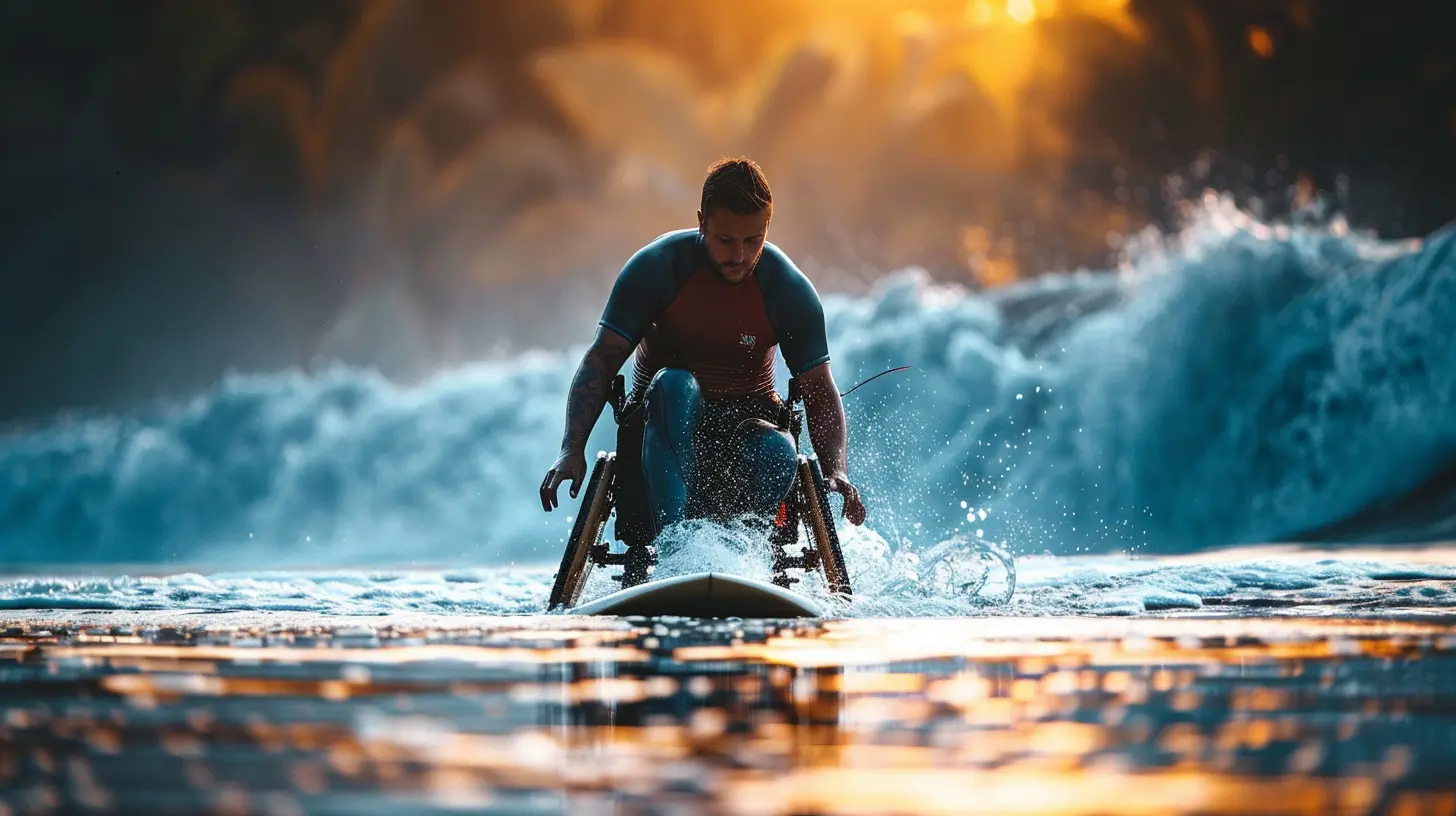
The Role of Adaptive Surfing in Mental Health and Wellness
It’s no secret that surfing can be a deeply therapeutic experience. The connection with nature, the meditative rhythm of the waves, and the sense of accomplishment after catching a wave can do wonders for mental health. Adaptive surfing is no different—in fact, it might be even more impactful.For many adaptive surfers, the ocean becomes a place of freedom—a space where their disabilities don’t define them. The water doesn’t discriminate; it doesn’t care if you’re in a wheelchair or have a prosthetic limb. Once you’re out there, it’s just you, the board, and the waves. Adaptive surfing can provide a sense of empowerment, helping surfers build confidence, reduce stress, and improve their overall mental well-being.
Surf Therapy Programs
Recognizing the mental health benefits of adaptive surfing, many organizations have developed surf therapy programs specifically for individuals with disabilities. Programs like Waves for All and Surfing for Hope combine the physical act of surfing with therapeutic practices, offering participants a holistic approach to healing.These programs often work with veterans, individuals with PTSD, and people with cognitive or developmental disabilities. The results? Improved self-esteem, reduced anxiety, and, most importantly, a feeling of belonging within the surfing community.
The Future of Adaptive Surfing and Inclusive Competitions
As adaptive surfing continues to grow, the future looks incredibly bright. More and more people are recognizing the value of inclusivity in sports, and the adaptive surfing community is expanding rapidly. But what does the future hold for adaptive surfing and inclusive competitions?Increased Accessibility
One of the biggest challenges facing adaptive surfers is access to the ocean. Many beaches still lack the necessary infrastructure to accommodate individuals with disabilities. However, this is starting to change. Beach access mats, specially designed wheelchairs, and surf schools offering adaptive lessons are becoming more common, making it easier for people with disabilities to get out on the water.Mainstream Recognition
While adaptive surfing is gaining recognition, there’s still a long way to go before it’s fully integrated into the mainstream surf culture. However, with more exposure through competitions, documentaries, and media coverage, adaptive surfers are starting to get the attention they deserve. Who knows? We might even see adaptive surfing included in future Paralympic Games.The Power of Community
At the end of the day, adaptive surfing is about more than just the sport—it’s about community. The adaptive surfing community is tight-knit, supportive, and ever-growing. Whether it’s through competitions, surf therapy programs, or local surf schools, this community is creating opportunities for people with disabilities to experience the joy of surfing, and it’s showing the world that the ocean is for everyone.
Conclusion
The rise of adaptive surfing and inclusive competitions is transforming the world of surfing, making it more accessible, diverse, and empowering for people of all abilities. Whether it’s through modified boards, support from fellow surfers, or the growing number of adaptive surfing events, the message is clear: surfing is for everyone. And as more adaptive surfers hit the waves, the sport will continue to evolve into a more inclusive and representative space for all.So, next time you’re at the beach, watch closely—you might just catch an adaptive surfer carving up the waves and proving that no matter the challenge, the ocean has room for everyone.
all images in this post were generated using AI tools
Category:
SurfingAuthor:

Easton Simmons
Discussion
rate this article
21 comments
Jessica McAuley
Adaptive surfing showcases incredible talent and spirit, proving that anyone can ride the waves. Inclusivity in sports is essential!
April 7, 2025 at 8:40 PM

Easton Simmons
Thank you! Adaptive surfing truly exemplifies the power of inclusivity, demonstrating that everyone can experience the joy of riding the waves.
James McCall
This article beautifully captures the spirit of adaptive surfing and its impact on inclusivity in sports. It's inspiring to see athletes overcoming challenges and showcasing their talents. I appreciate how these competitions not only highlight incredible skill but also promote a sense of community and empowerment for everyone involved. Thank you for sharing!
February 5, 2025 at 7:37 PM

Easton Simmons
Thank you for your kind words! I'm glad the article resonated with you and captured the essence of adaptive surfing and its positive impact on inclusivity.
Haze Barker
Thank you for highlighting the inspiring growth of adaptive surfing! It's incredible to see how inclusive competitions empower athletes and promote accessibility in sports. Truly a positive shift for the surf community!
January 28, 2025 at 2:03 PM

Easton Simmons
Thank you for your kind words! I'm glad to hear that the article resonated with you and highlighted the positive impact of adaptive surfing on inclusivity and accessibility in the sport.
Hudson McCarty
Adaptive surfing is transforming the sport, showcasing incredible talent and resilience. Inclusive competitions not only empower athletes with disabilities but also inspire communities, proving that the waves are meant for everyone. A truly uplifting movement!
January 24, 2025 at 3:51 AM

Easton Simmons
Thank you for your insightful comment! I completely agree—adaptive surfing is redefining the sport and fostering inclusivity, reminding us all of the power of resilience and community.
Lindsey McAndrews
This article beautifully highlights the transformative impact of adaptive surfing and inclusive competitions. It's inspiring to see athletes overcoming challenges and breaking barriers. This movement not only enriches the sport but also promotes a powerful message of resilience and community. Well done!
January 18, 2025 at 5:04 AM

Easton Simmons
Thank you for your thoughtful comment! I'm glad you found the article inspiring and resonant with the values of resilience and community in adaptive surfing.
Raegan Heath
Adaptive surfing empowers individuals with disabilities, showcasing resilience and talent while promoting inclusivity in the sports community. A game changer!
January 10, 2025 at 11:25 AM

Easton Simmons
Thank you for your thoughtful comment! I completely agree—adaptive surfing truly highlights the incredible resilience and talent of individuals with disabilities, fostering a more inclusive sports community.
Kane Wilson
Adaptive surfing is a testament to the human spirit, showcasing resilience and determination in the face of challenges. The rise of inclusive competitions not only empowers athletes but also inspires us all to embrace diversity and celebrate the incredible potential within everyone. Let’s ride this wave of positivity together!
January 5, 2025 at 4:52 AM

Easton Simmons
Thank you for your insightful comment! I completely agree—adaptive surfing truly exemplifies resilience and the celebration of diversity in sports. Let's continue to support and uplift each other!
Nell McGuffin
It's inspiring to see adaptive surfing gaining momentum! The inclusivity in competitions not only showcases incredible talent but also promotes a powerful message about overcoming challenges. Excited to see how this movement continues to evolve and inspire!
December 31, 2024 at 8:56 PM

Easton Simmons
Thank you for your thoughtful comment! It’s truly exciting to witness the growth of adaptive surfing and the positive impact it has on inclusivity and empowerment. Let's keep the momentum going!
Priscilla Elliott
What an inspiring shift in the surfing world! The growth of adaptive surfing and inclusive competitions highlights the incredible potential of athletes with disabilities. I'm excited to see how this movement continues to evolve!
December 29, 2024 at 10:00 PM

Easton Simmons
Thank you! It's truly inspiring to witness such positive changes in the surfing community, and I'm excited for the future of adaptive surfing as it continues to break barriers and celebrate diverse talents.
Alvin McQuillan
Riding the waves of change! Adaptive surfing proves that anyone can catch a wave and a smile!
December 27, 2024 at 3:29 AM

Easton Simmons
Thank you for your supportive comment! Adaptive surfing truly showcases the power of inclusivity and joy in sports.
Brooke Garcia
Empowering athletes, inspiring change!
December 24, 2024 at 4:16 AM

Easton Simmons
Thank you! Empowering athletes through adaptive surfing truly fosters inclusivity and inspires positive change in the sport.
Thea Long
What an inspiring wave of change! Adaptive surfing is not just about riding the waves; it’s about breaking barriers and celebrating diversity. These inclusive competitions remind us that passion knows no limits. Let’s cheer on these incredible athletes as they carve out their own paths in the surf! 🌊🏄♂️✨
December 21, 2024 at 12:53 PM

Easton Simmons
Thank you for your insightful comment! Indeed, adaptive surfing beautifully embodies inclusivity and the spirit of empowerment. Let’s continue to celebrate these remarkable athletes! 🌊✨
Tempest Roberson
Adaptive surfing is not just a sport; it's a testament to resilience and determination! These incredible athletes redefine limits, inspiring us all to embrace diversity and inclusivity. Every wave ridden is a victory, showcasing the unstoppable spirit of those who dare to chase their dreams. Ride on!
December 19, 2024 at 5:43 AM

Easton Simmons
Thank you! Your words beautifully capture the essence of adaptive surfing and its powerful impact on inclusivity and resilience. Let's continue to celebrate these inspiring athletes!
Rhea Shaffer
Adaptive surfing is revolutionizing the sport, showcasing incredible talent and determination. These inclusive competitions not only break down barriers but also inspire athletes and spectators alike. It's a powerful movement that deserves attention and support—surfing’s future is brighter when everyone rides the wave!
December 11, 2024 at 8:35 PM

Easton Simmons
Thank you for your insightful comment! I completely agree that adaptive surfing is transforming the sport and inspiring many—it's a stunning example of resilience and inclusivity in action.
Olympia Bass
Waves of change embrace the shore, Where all can ride, their spirits soar. Adaptive hearts on surfboards glide, Inclusion's tide, our souls collide. A victory for every tide.
December 6, 2024 at 7:24 PM

Easton Simmons
Thank you for capturing the essence of adaptive surfing! Your words beautifully reflect the spirit of inclusion and the joy of riding the waves together.
Zylith McIlroy
Adaptive surfing is transforming the waves! It's a powerful testament to resilience and inclusivity, proving that everyone deserves the thrill of riding the ocean!
November 30, 2024 at 12:18 PM

Easton Simmons
Thank you! Adaptive surfing truly embodies the spirit of resilience and inclusivity, showcasing how the ocean can be for everyone.
Nala Whitaker
Adaptive surfing is breaking barriers and promoting inclusion in the sport. It's inspiring to see athletes showcase their skills and resilience, making surfing accessible to everyone.
November 28, 2024 at 9:39 PM

Easton Simmons
Thank you! It's heartening to see how adaptive surfing empowers individuals and fosters a more inclusive community in the sport.
Juliana Carey
Adaptive surfing is transforming the sport, proving that determination knows no limits. Inclusive competitions showcase talent and inspire us all.
November 27, 2024 at 8:04 PM

Easton Simmons
Thank you! It's inspiring to see how adaptive surfing breaks barriers and highlights the incredible resilience of athletes.
Selah Erickson
Empowering waves for all—truly inspiring progress!
November 25, 2024 at 4:57 AM

Easton Simmons
Thank you! It's amazing to see how adaptive surfing is breaking barriers and inspiring everyone to ride the waves!
Julianne McAdoo
Inspiring waves for all!
November 24, 2024 at 4:08 AM

Easton Simmons
Thank you! I'm glad you feel inspired by the growth of adaptive surfing and inclusivity in competitions.
Isaac Blair
Inspiring growth! Adaptive surfing truly promotes inclusivity in sports.
November 23, 2024 at 12:44 PM

Easton Simmons
Thank you! We're excited to see how adaptive surfing continues to break barriers and foster inclusivity for all.
MORE POSTS

Optimizing Your Strength Workouts with Periodization

FA Cup Final: Can the Cinderella Story End with a Trophy?

The Importance of Footwork in Becoming a Great Defender
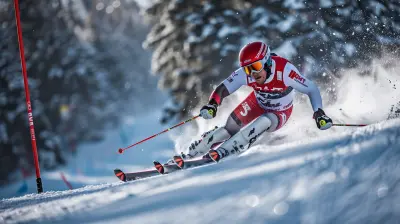
Ski Racing Tips: How to Shave Seconds Off Your Time

The Role of Sports Psychology in Elite Basketball Performance

How to Choose the Perfect Snowboard for Your Riding Style

The Hidden Benefits of Playing Sports for Mental Health

The Impact of Crowd Energy on Home-Court Advantage

Chronicling Human Endeavor: A Look at Sports on Film

Why Athletes Are Choosing Direct-to-Consumer Brands for Endorsements

Breaking Barriers: Olympic Athletes Who Made History

World Series Game 7: Will Experience or Youth Prevail?

The Environmental Impact of Surfing: What You Can Do to Help